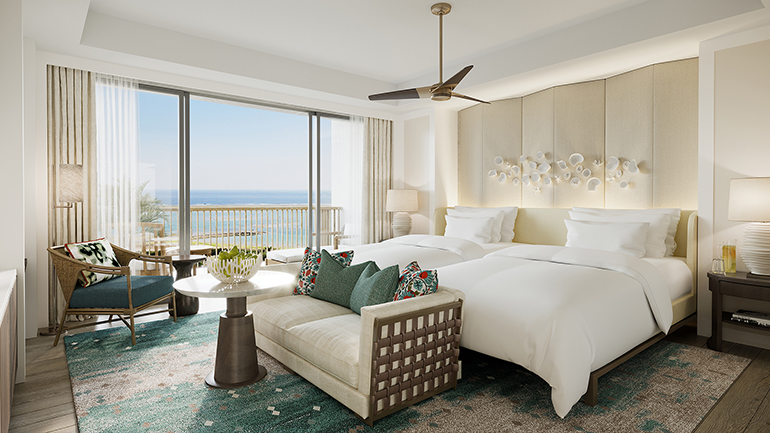DESIGNING LUXURY: HOW INTERCONTINENTAL PIONEERE SOME OF THE WORLD'S MOST ICONIC HOSPITALITY DESIGNS - Paying homage to its 75-year history, we look at how the design of InterContinental Hotels & Resorts has captured the allure of international travel for luxury guests today and through the years. Since its inception, the brand has evolved its architecture and design to stay ahead of the changing needs and tastes of its guests.
The current design philosophy was developed in collaboration with highly regarded British interior designer Tara Bernerd and launched in 2016. The brand and hotel owners also work with some of the world’s most renowned and celebrated architects and designers as they develop new projects or existing spaces. Click through our gallery of some of the most recent refurbishments across InterContinental Hotels & Resorts globally here.
Historic buildings that are architecturally significant to the local environment or national history are often a destination in themselves. InterContinental Lyon - Hotel Dieu is set in a former hospital building alongside the Rhone river. Dating back to the renaissance period, it is one of the city’s most emblematic historical landmark buildings. At the time of its construction, many people were surprised by the juxtaposition of the building's palace-like architecture and its function of medical care for the workers of Lyon. Charged with the design transformation of the building was Studio Jean-Philippe Nuel, along with architects AIA Architectes and RL&A.
READ ALSO
16 BEST LUXURY RESORTS IN INDONESIA
“My approach with this project to draw on the history of the place; not in a superficial way by trying to reproduce or copy elements of decoration, but rather by perpetuating the spirit that guided its construction in the 18th century,” says Nuel. “The dichotomy of its past was reflected in the interior, with a very richly decorated Dome, while other aspects have an air of the monastic. When I redesigned the place, I wanted to maintain this play of contrasts without ever falling into ostentatious luxury, which would have been out of place in relation to the history of Lyon.”
InterContinental’s approach to new-build properties is to develop iconic architecture combining consistent global standards with the distinct culture of each location. The hotel location and its local history provide a rich source of design inspiration, combined with the possibility to design a space with a sophisticated guest experience front of mind. Designed by celebrated eco-architect, Bill Bensley, InterContinental Danang Sun Peninsula Resort is influenced by nearby temples. The rooms have traditionally crafted touches, including carved panels of merawan wood, richly embroidered silks, and custom-made ceramic tiles.
“For the design I was inspired by all the best parts of Vietnamese vernacular architecture, combined with some wilder elements, such as a bar designed by an aristocratic monkey, a banana yellow cinema and what many travel magazines have penned as the most exciting toilets in the world!” says Bensley. “The result is a whimsical realm spread across four levels - Heaven, Sky, Earth and Sea - taking advantage of the incredible vistas from the mountaintop and the pristine beach.”
Jean-Philippe Nuel comments, “InterContinental's philosophy, which is location-centric, culturally local and also open to the world, is very close to my personal vision of the hotel business, and I believe is why it is so well-received by both guests and the design world.”
Upon its launch in 2019, InterContinental Lyon – Hotel Dieu was the recipient of the prestigious global Gold Key Award for excellence in hospitality design.
Behind the pioneering spirit, elegance has always been at the heart of design choices, ensuring that layers of discovery and comfort reveal an unparalleled level of sophistication. Familiarity from one hotel to the next is evoked through thoughtful design choices and respect for the craft and culture of the destination. InterContinental Hotels & Resorts have been delivering discreet luxury for 75 years and counting, it’s where luxury is a state of mind.












0 Comments
FOLLOW ME : INSTAGRAM | BLOGLOVIN | PINTEREST | FACEBOOK | TWITTER